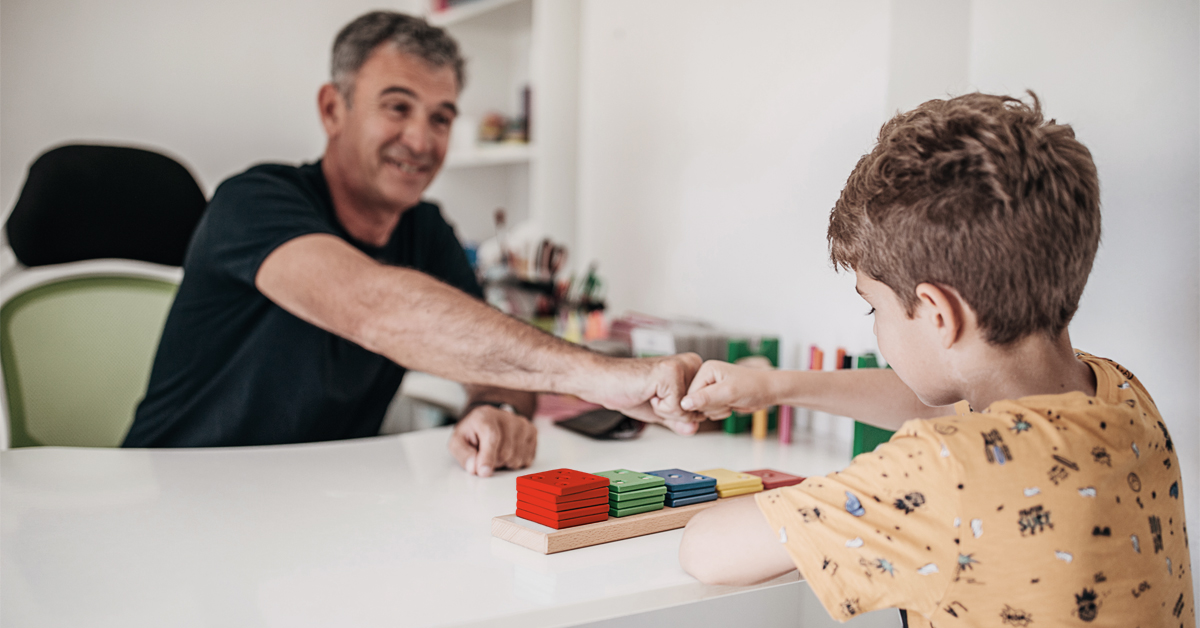
Mental health is not just the absence of mental health disorders. Children may differ in developmental strengths, weaknesses, and coping strategies, which then impacts their quality of life. Mental health is a continuum, and the identification of specific mental disorders is a narrow way of understanding the whole person (Centers for Disease Control and Prevention [CDC], 2022).
In school, guidance counselors and school psychologists are the first point in helping students address their mental health needs. Although occupational therapists are trained in mental health issues, they are not typically on the school-based mental health team.
Occupational therapists use a holistic approach that considers the physical, cognitive, social, and emotional needs of each student. They also have a deep understanding of how the school environment can impact a student's ability to learn and succeed. This makes them uniquely qualified to address the mental health needs of students in schools.
Why are Students Experiencing More Mental Health Issues?
Before the COVID-19 pandemic, the CDC estimated that 1 in 5 students reported having a mental health issue, with only 20% receiving treatment from a provider. In a 2020 survey of parents around the country, 71% stated that the pandemic impacted their child’s mental health (Abramson, 2022).
From March to October 2020, CDC data revealed that mental health-related emergency department visits increased by 24% for children ages 5 to 11 and 31% for those ages 12 to 17 compared to the year before (Abramson, 2022).
The pandemic exacerbated health equity issues for students of lower socioeconomic backgrounds, who tend to have lower rates of school psychologists and counselors in their school districts.
The National Association of School Psychologists (NASP) recommends a 1 per 500 students school psychologist ratio, yet current NASP data estimate a ratio of 1 per 1211 students (Abramson, 2022).
Thus, mental health issues are increasing at a faster rate than in previous years, and there is not enough staff to help students address these challenges.
Advocating for the Role of OT
As schools struggle to address this mounting problem, occupational therapists are uniquely positioned to provide much-needed support.
- OTPs are well prepared to help students develop social-emotional skills and cope with mental health challenges that may impact their roles, occupations, and daily activities that bring meaning to their lives. This includes everything from helping students organize their homework to eating with friends in the cafeteria.
- Emotional regulation, classroom modifications, and therapeutic use of self are strategies OTPs can use to help students improve their quality of life and emotional well-being.
- OTPs are trained in mental health interventions and can provide valuable support to students struggling with anxiety, depression, and other mental health disorders.
- OTPs can consult with teachers and other school staff members to help them better understand and support students with mental health needs.
- OTPs can provide professional development training on topics like trauma-informed care, sensory strategies, and motivational interviewing.
- OTPs can advocate for policy changes at the state and federal levels that would improve access to mental health services for all students.
The mental health of our nation's children is in a state of crisis, and OTPs are uniquely positioned to provide much-needed support. By taking a holistic approach that considers the physical, cognitive, social, and emotional needs of each individual student, OTPs can make a real difference in the lives of young people struggling with mental health issues.
Resources
Moni Keen, OTD, OTR/L, offers a course on school-based OT and mental health: School-Based Occupational Therapy and Student Mental Health: Are We Helping?
AOTA offers a mental health toolkit for OT practitioners addressing mental health in schools.
References
Abramson, A. ( 2022). Children’s mental health is in crisis. APA Monitor, 53(1), 1-69. Retrieved from https://www.apa.org/monitor/2022/01/special-childrens-mental-health
Ball, M. (2018). Revitalizing the OT role in school-based practice: Promoting success for all students. Journal of Occupational Therapy, Schools, & Early Intervention, 11(3), 263-270. https:// doi.org/10.1080/19411243.2018.1445059
Blackwell, C. R., & Bilics, A. (2018). Preparing occupational therapy students to address mental health promotion, prevention, and intervention in school-based practice. Journal of Occupational Therapy, Schools, & Early Intervention, 11(1), 77-86. https://doi.org./10.1080/19411243.2017.1386605
Centers for Disease Control and Prevention. (2022, April 19). What is children's mental health? Centers for Disease Control and Prevention. Retrieved December 1, 2022, from https://www.cdc.gov/childrensmentalhealth/basics.html#:~:text=Being mentally healthy during childhood,school, and in their communities.
Centers for Disease Control and Prevention. (2020, November 12). Mental health-related emergency department visits among children aged <18 years during the COVID-19 pandemic - United States, January 1–October 17, 2020. Centers for Disease Control and Prevention. Retrieved December 1, 2022, from https://www.cdc.gov/mmwr/volumes/69/wr/mm6945a3.htm
Chan, C., Dennis, D., Kim, S. J., & Jankowski, J. (2017). An integrative review of school-based mental health interventions for elementary students: Implications for occupational therapy. Occupational Therapy in Mental Health 33(1), 81 - 101. https://dx.doi.org/10.1080/0164212X.2016.1202804